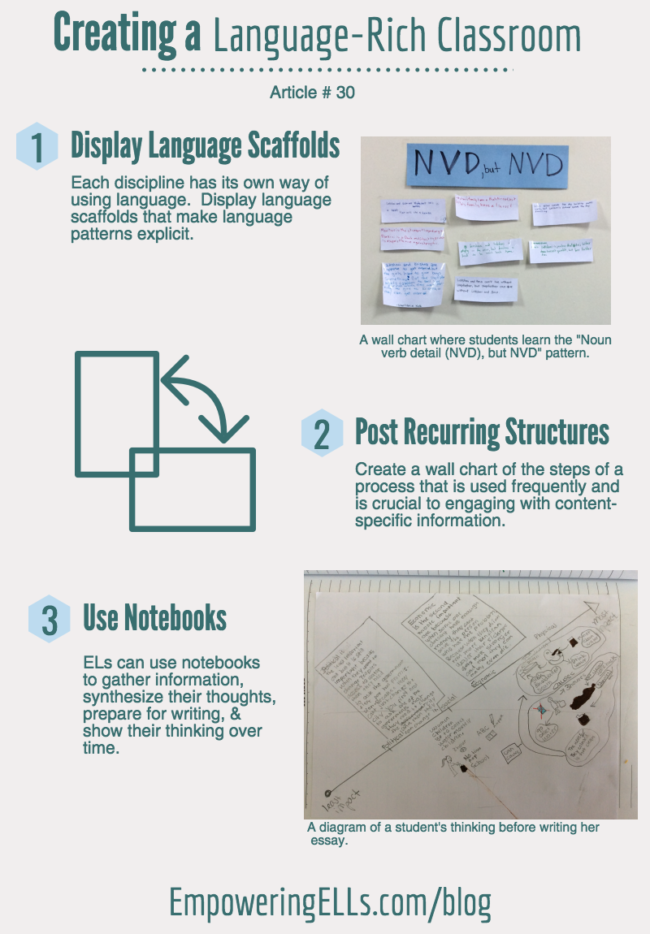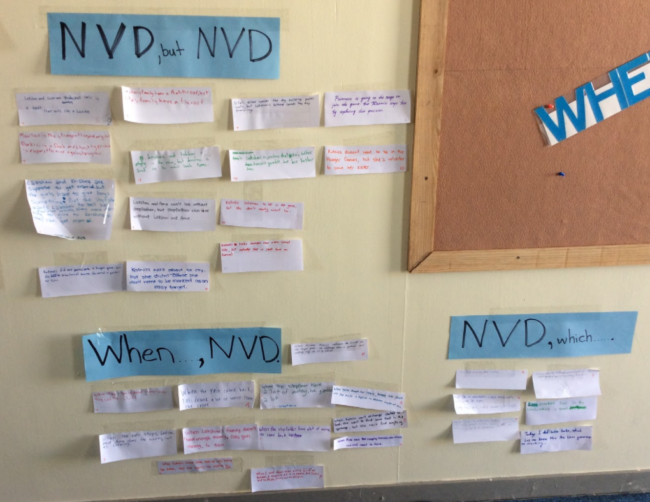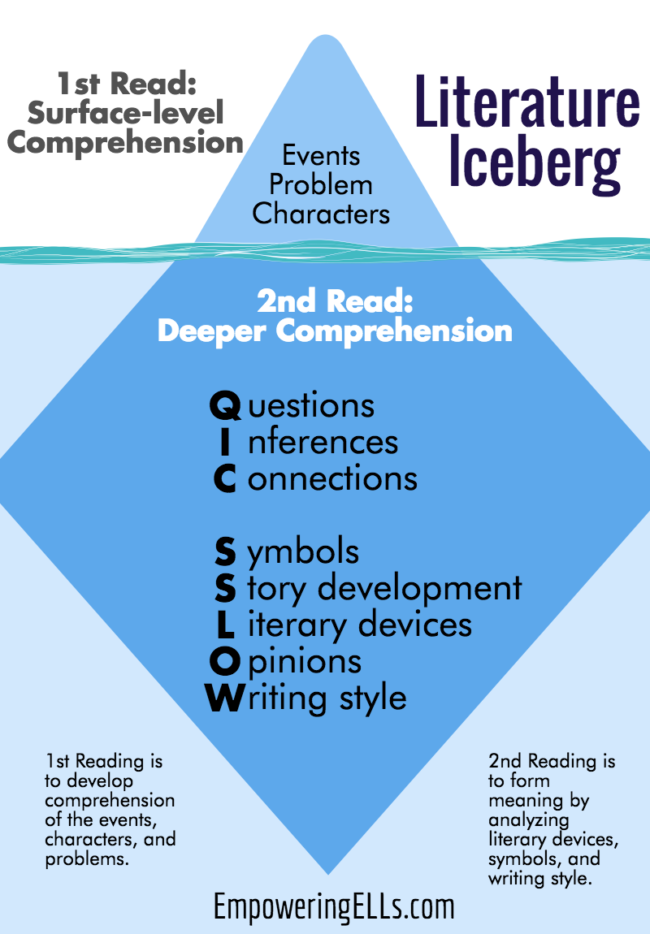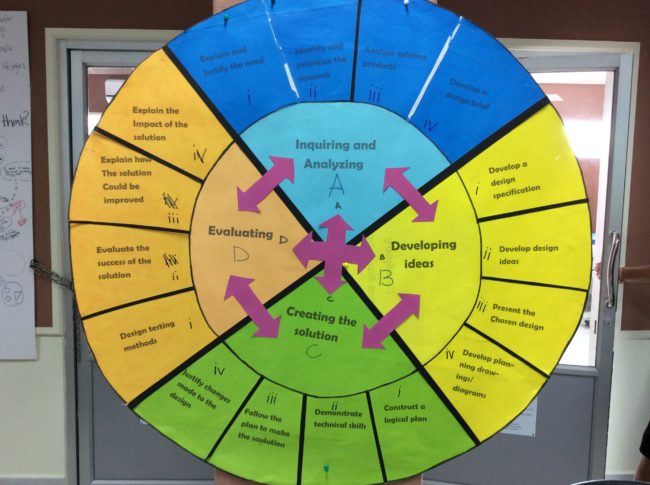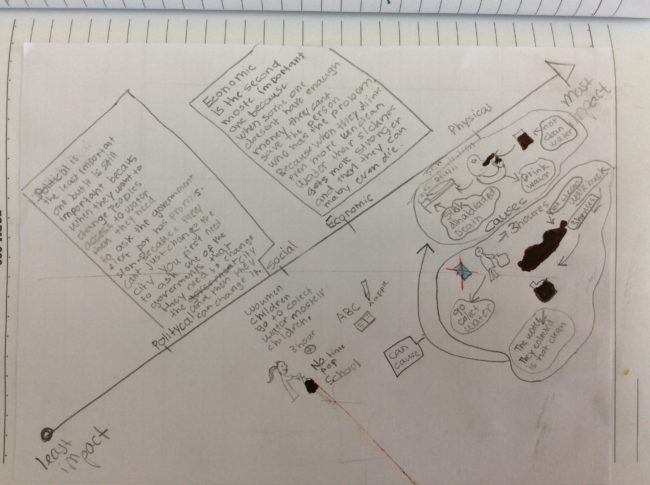Part 11 of WIDA’s Essential Action Series. Click here to return to the first article in the series.
This article was inspired by WIDA’s Action 10 from Essential Actions: A Handbook for Implementing WIDA’s Framework for English Language Development Standards (Gottlieb, 2013). In this article, I will share several practices that help fill a room with students’ thinking and writing and share ways for walls and notebooks can reinforce literacy development.
Practices that Cultivate a Language-Rich Classroom
Display Visual Scaffolds
Once I have guided the ELs into an understanding of a particular language pattern, I have them write a sentence of their own that follows the pattern in focus. (I highly recommend using Jeff Anderson’s Mechanically Inclined approach to teaching grammar and mechanics in context.) Next, I tape their sentences on the wall under the visual scaffold of the pattern, as seen in the photo below. Students often turn to the wall to look see which pattern would best help them communicate their ideas.
Remind your students: Grammar and mechanical guidelines are not just rules to memorize. Grammar helps others clearly understand ELs . Like hammers hanging off the side of a hardware store, let your walls display the tools that your students needs.
I also use Mechanically Inclined to help students understand how to comprehend a sentence. ELs are often confused by complex sentence structures. When they re-encounter a complex sentence structure that we’ve already learned, I simply direct them to the wall to study their sentences. It helps them figure out how to rearrange the parts of a sentence to construct meaning.
If you’re a content teacher, you might want to consider teaching ELs how language works in your particular discipline. For example, a science teacher can create a visual scaffold for a hypothesis that follows this pattern: If……, then….because…. ELs are more likely to comprehend texts from that discipline and communicate in a way that is well received by members of that field when ELs are explicitly taught the language of a particular discipline
Post Recurring Structures
Do you have a structure or a process that you consistently use? If so, then ELs would benefit from a wall chart or a print out that would help them remember the parts it. For example, my most reliable tool to teaching reading instruction is called Visible Reading, a hybrid of guided reading and close reading. I use a structure called Literature Iceberg during Visible Reading to scaffold the process of thinking deeply about a piece of literature.
To close our Visible Reading session, ELs turn to their copies of Literature Iceberg that are glued into their journals. Students identify one or two of the things on the Literature Iceberg to contribute to the Harkness Discussion by producing a Quick Write in their journals. This prepares them to have engaged discussions about the text. Students now have a process that facilitates critical thinking instead of a teacher that barks, “Think deeply about the text!”
In another example, the Design teachers consistently talk about the Design Cycle, a process of creating a product. They’ve created a huge wall chart with lots of student-friendly information to scaffold students’ understanding of the Design Cycle. The wall chart is there as a reminder to students, but the teachers also use it to guide students during mini-conferences. Because the Design Cycle wall chart is visual, it quickly provides a starting point for a conversation between teachers and students.
Whatever routine, process, or structures you use consistently, I recommend turning them into wall charts or producing soft copies. These visuals promote using language for a purpose and scaffolds ELs’ abilities to think more like an engineer, sociologist, journalist, a scientists and so forth. ELs can learn to think more like a scientist because they are reminded of the vocabulary scientists use and the way scientists organize ideas.
Furthermore, humans can only hold a handful of items in their memory at one time. Because ELs are learning both language and content, they are more likely to recall these abstract, complex patterns with the aid of these supports
Think of this strategy like the Apple iTune Store’s slogan – There’s an app for that. Instead of an app, there’s a visual for that. If it’s a routine, we can represent it in images, post it on our walls, or provide ELs with a copy of it. Our rooms become language-rich when there are stimuli present that spur us to use language.
Utilize Notebooks
Part of creating a language-rich classroom is having a device or process that captures our ongoing thinking and holds our expanding knowledge of the topic. My favorite approach is a plain-old, simple notebook.
At the start of each year, I go to our school store room and collect enough notebooks for each student in the classr. We write in them from the very first day. We use our notebooks to process vocabulary, analyze mentor texts, Quick Write about what we’ve read during Free Reading, and interact with the text during Visible Reading. Each student in the secondary school has a laptop, but when I want students to annotate on a physical text, I copy it and have them glue it into their notebooks.
The glued text prevents them from being distracted while they read and allows them to physically interact with the text (write on it, highlight it, or draw a picture next to it), which deepens their overall comprehension.
Dunja created created the diagram below in her notebook after she read a text about the water crisis in Laos. I then had her present it to other classmates to serve as a model for their work. Dunja’s diagram and her mini, informal presentation made her feel more comfortable when it was time to produce writing about the water problem in Laos. This is just one specific example of how using a physical notebook captures and fosters critical thinking.
The notebooks also serve as a portfolio of their learning. I can use the notebook to share students’ work with parents and colleagues. I also can conference with ELs about their work and show them their skill progression. Because I have my ELs use their notebooks so extensively, I often see them return to earlier pages in their notebook to find things that might support their work. As any EL teacher will tell you, empowering students to be independent learners is the goal. These interactive notebooks provide a tool for ELs to review and reflect so they are able to develop an independence and self-sufficiency in the English language.
Takeaways
These three strategies have one thing in common – they make learning visible. Teachers make visible the thinking they expect of their students by posting wall charts. Diagrams of recurring structures provide a quick visual reference of the steps and explicitly state the things ELs should focus on. Notebooks make ELs’ thinking visible to them by capturing it through drawing, notes, Quick Writes, and annotations.
When our thinking and language are made visible, ELs are empowered to think more critically and use domain-specific language. Teachers have a wealth of data to inform their instruction when ELs visibly display their thinking.
Next Post
Next week’s article will be about WIDA’s Action 10, which is titled “Identify the language needed for functional use in teaching and learning”. I’ll share how another science teacher and I worked together to build ELs’ ability to use scientific language. As nothing is more sciency than a lab report. I’ll also share my scaffolds for supporting ELs in communicating like a scientist informal, produced texts.
References
Gottlieb, M. (2013). Essential Actions: A Handbook for Implementing WIDA’s Framework for English Language Development Standards. Madison: Board of Regents of the U of Wisconsin System.

